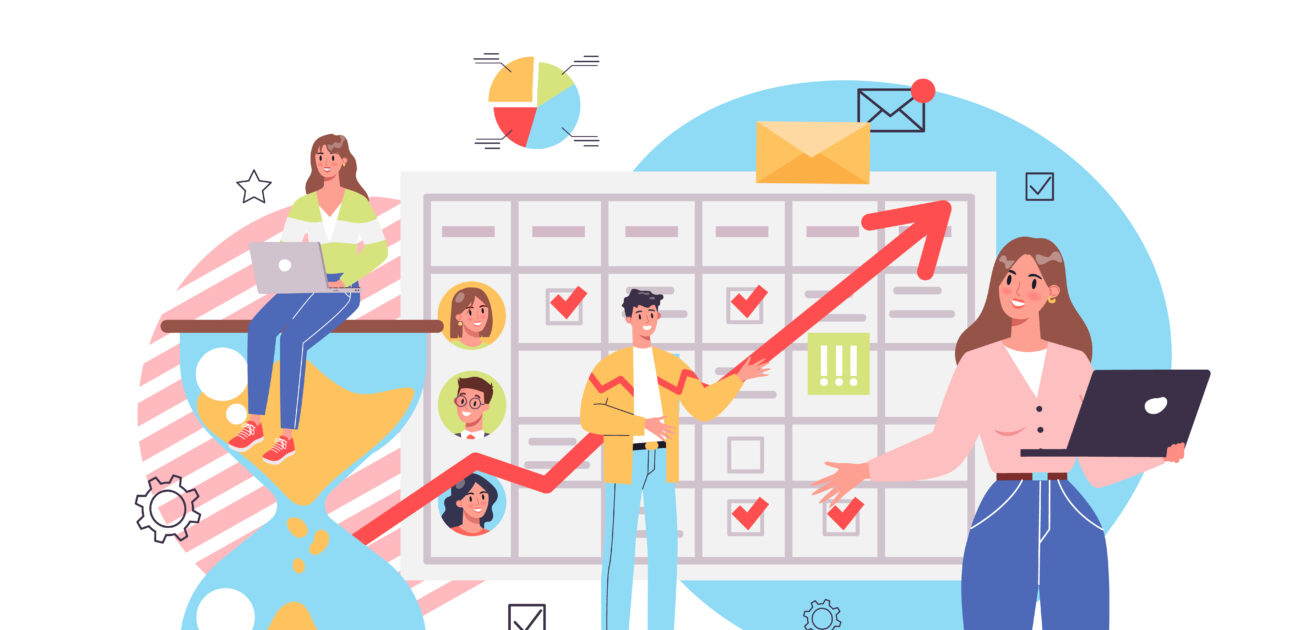On average, Americans spend close to $830 per person on gifts and other seasonal items during the holiday period, according to the National Retail Federation (NRF).
Given the scale of the opportunity, it’s fair to say the holidays are make-or-break for many brands — which means it’s essential you nail your holiday marketing campaigns.
To help you out, we’ve rounded up some of our favorite holiday social media marketing strategies, along with top examples from real-world brands.
1. Spark Excitement
It’s the most wonderful time of the year, right? Capture the holiday spirit by doing something that gives back to your audience or community (while helping you achieve your marketing goals). Here’s how that could look.
Run a Social Media Giveaway
Giveaways are a fantastic way to reward your audience and grow your social media following.
Typically, these contests allow people to enter free of charge — without even making a purchase — by following the brand on social media, liking a specific social post, or tagging friends.
So it’s easy to see why marketers agree that increasing your following is the biggest benefit of running a giveaway, followed closely by raising brand awareness and increasing engagement.

Let’s take a look at a giveaway example from beverage brand Recess:
View this post on Instagram
Tying the campaign to Thanksgiving helps it feel seasonal and relevant rather than just another attempt to drum up more likes and follows on social media.
Donate to Good Causes
The holidays are the season of goodwill, so what better time to donate to charities and non-profit organizations that matter to you and your audience?
Of course, this strategy isn’t totally selfless. It’s also an effective way to position yourself as a caring brand, which can help you attract more customers. Indeed, three-quarters of Generation Z and Millennial consumers say they seek out brands that support the same causes as them, with two in five doing so always or often.
Sandal brand Teva capitalized on this trend by launching a donation-themed campaign during the 2022 holiday season:
View this post on Instagram
This campaign worked exceptionally well because it allowed Teva’s audience to influence how the brand donated the money. Customers who purchased an item voted on which non-profit organization they’d like to support.
One word of caution about this strategy: be careful about the causes you back.
According to YPulse, three-fifths of Gen Z and Millennial-aged consumers believe brands should only get involved in causes that relate to the products they sell, so don’t just back a random charity — make sure it has some connection to your brand or niche.
2. Run a Holiday Promotion
Sure, consumers splash the cash during the holiday season. But there are lots of brands out there, so you need to give shoppers a reason to buy from you rather than the competition.
One of the best ways to do this is by planning a holiday promotion. Here are a couple of ways to do it:
Launch a Holiday Sale
While factors like product quality and shipping speed are important, price makes the biggest difference when persuading consumers to part with their hard-earned cash during the holiday season. According to Gartner, price is the #1 influencer behind purchasing decisions, while promotions or deals also feature high on the list.
So, it makes sense to target price-sensitive shoppers with a holiday sale, offering customers a discount on a specific product, a product category, or your entire inventory.
In this example, Glossier offered money off its routine-simplifying sets while also teasing its forthcoming “biggest” sale of the year:
View this post on Instagram
Not only does Glossier drum up anticipation for a future sale, but it also gets to drive some immediate purchases with a time-limited discount on a specific product line.
Offer Free Shipping
Free shipping is an attractive promotion at any time of year. In fact, “delivery cost” is the joint #1 most important factor consumers consider when deciding to shop online, according to research from X Delivery and the Leavey School of Business. But it’s especially important during the holiday season for two main reasons:
- Consumers are already spending a ton of money and are eager to save on perceived “extra” fees like shipping
- Deliveries need to arrive by a specific date, often forcing customers to choose expedited delivery options
In short, if you can get gifts to your customers on time without charging them for shipping, you’re well placed to generate sales.
Chubbies is well aware of this. In this holiday campaign example, the menswear brand promoted three holiday-friendly fits while also offering free two-day shipping on orders over a certain amount:
View this post on Instagram
With shoppers having to spend $120+ to unlock the offer, it’s an excellent way for Chubbies to boost its average order value.
3. Offer Shopping Inspiration
Gift-giving is difficult, with two-thirds of Americans wishing they had help with holiday gifting. Why not make their lives easier by providing some timely shopping inspiration? Here are four ways to do it.
Share a Holiday Gift Guide
The most obvious way to inspire consumers during the holiday season is by sharing a gift guide, giving your audience ideas for what to buy their loved ones (or themselves).
There are a couple of different ways to “do” gift guides. You could create a holiday category or collection on your e-commerce store or write a blog post rounding up some of your top gift ideas. Or you could keep it simple and share those products on social media, like this example from Bala Bangles.
View this post on Instagram
Don’t forget to link to the products you’re sharing — either in the caption, the comments, shoppable links, or through your bio.
Launch a Holiday Collection
Rather than simply recommending your existing products to gift shoppers, you could take things a step further by launching a whole holiday-themed collection, like in this example from Tiffany & Co.
View this post on Instagram
This approach works so well because it offers “baked-in” urgency. Seasonal collections are only around for a short period, so consumers must act fast if they don’t want to miss out.
Sell Limited-Edition Merch
Let’s be honest: we’ve all bought something we don’t technically need over the holiday season, perhaps because we’re already in the shopping mood from all that gift-buying. So why not capitalize on all those impulse purchases by dropping limited-edition festive merch?
Here’s an example of this strategy in action, courtesy of drinks brand Liquid Death.
View this post on Instagram
One of our favorite things about this tactic is that it helps brands that don’t sell holiday-friendly products to join the seasonal conversation.
Most people wouldn’t think of canned water as a holiday purchase. Indeed, web searches for Liquid Death drop off during the holiday season.
By selling its festive merch, the brand generates some engagement (and, hopefully, sales) at an otherwise quiet time of year.
Target Last-Minute Shoppers
According to the NRF, three-fifths of consumers start browsing for — or buying — holiday gifts before November.
Yet, for all our preparation, there are always going to be some gifts that manage to slip through the net. It makes sense to create social media campaigns explicitly targeting last-minute gift buyers.
Here’s an example from the apparel brand Madewell.
@madewell Last-minute gifting, made easy. We have lots of small surprises and e-gift cards to the rescue. #madewell #everydaymadewell ♬ original sound – Jim Rossington
The messaging is all about reassuring “holiday shopping procrastinators” that they’re not too late to find the perfect gift, with supportive phrases like “made easy” and “to the rescue.”
As with the holiday gift guide example we shared above, don’t forget to link to your last-minute shopper-friendly purchases from your social posts to give yourself the best chance of turning impressions into sales.
4. Tap Into Holiday Trends
There are all sorts of trends and traditions related to the holiday period. If you can tap into them successfully, you’ll generate a bunch of social media engagement, hopefully translating to web traffic and purchases. Here are a couple of ways to take advantage of holiday trends.
Mimic Spotify Wrapped
Spotify Wrapped has quickly become an end-of-year tradition, with the streaming platform’s customers waiting eagerly to brag about (or own up to) their most listened-to tracks and artists. It generated 60 million shares in 2021 alone, although that number doesn’t account for screenshots, which many people use to share their results on social media.
The success of Spotify Wrapped has prompted many other brands to capitalize on the trend by “remixing” the campaign.
While Spotify relies on vast user data to produce Wrapped, most of these alternative versions are far simpler, featuring little more than some clever text and bold backgrounds. For example, here’s one from eyewear brand Warby Parker.
View this post on Instagram
This smart yet simple campaign combined funny, self-deprecating copy referencing some of Warby Parker’s most popular products. So it wasn’t just about engagement — it also offered the potential to drive sales.
Leverage Seasonal Awareness Days
There’s no shortage of awareness days during the holiday season. Tapping into these themed occasions helps brands join a wider conversation, which can result in more eyes on your social posts.
Look at this example from Cheetos, which celebrated National Gingerbread House Day (who knew that was a thing?).
View this post on Instagram
Like some of the other examples we’ve shared, this strategy demonstrates that it’s possible for brands that don’t sell traditionally gifting-friendly products to capitalize on the holiday season.
Are you looking for more ways to drive awareness, engagement, and sales throughout the holiday season? Don’t miss our upcoming social media conference!
Featured image by Freepik.










